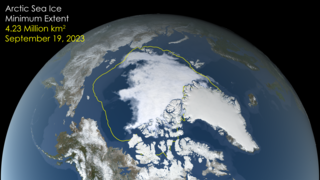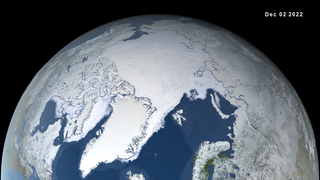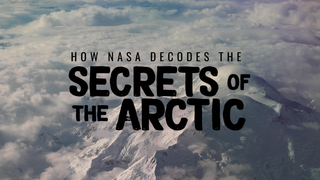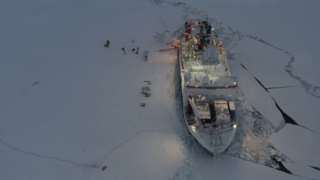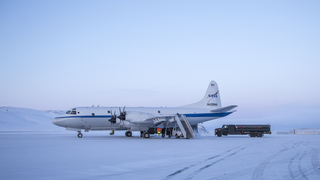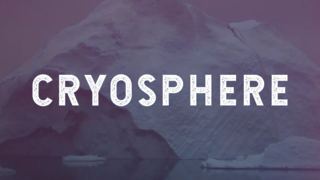Earth
ID: 14413
Arctic sea ice likely reached its annual minimum extent on Sept. 19, 2023, making it the sixth-lowest year in the satellite record, according to researchers at NASA and the National Snow and Ice Data Center (NSIDC). Meanwhile, Antarctic sea ice reached its lowest maximum extent on record on Sept. 10 at a time when the ice cover should have been growing at a much faster pace during the darkest and coldest months.
Scientists track the seasonal and annual fluctuations because sea ice shapes Earth’s polar ecosystems and plays a significant role in global climate. Researchers at NSIDC and NASA use satellites to measure sea ice as it melts and refreezes. They track sea ice extent, which is defined as the total area of the ocean in which the ice cover fraction is at least 15%.
More information can be found on NSIDC
Arctic Sea Ice Minimum 2023
Scientists track the seasonal and annual fluctuations because sea ice shapes Earth’s polar ecosystems and plays a significant role in global climate. Researchers at NSIDC and NASA use satellites to measure sea ice as it melts and refreezes. They track sea ice extent, which is defined as the total area of the ocean in which the ice cover fraction is at least 15%.
More information can be found on NSIDC
Source Material
Related
Credits
Grace Weikert (KBR Wyle Services, LLC): Lead Producer
Sally Younger (NASA/JPL): Lead Writer
Trent L. Schindler (USRA): Lead Visualizer
Walt Meier (NASA/GSFC): Lead Scientist
Jefferson Beck (KBR Wyle Services, LLC): Project Support
Katie Jepson (KBR Wyle Services, LLC): Project Support
Aaron E. Lepsch (ADNET Systems, Inc.): Technical Support
Sally Younger (NASA/JPL): Lead Writer
Trent L. Schindler (USRA): Lead Visualizer
Walt Meier (NASA/GSFC): Lead Scientist
Jefferson Beck (KBR Wyle Services, LLC): Project Support
Katie Jepson (KBR Wyle Services, LLC): Project Support
Aaron E. Lepsch (ADNET Systems, Inc.): Technical Support
Please give credit for this item to:
NASA's Goddard Space Flight Center
NASA's Goddard Space Flight Center
Short URL to share this page:
https://svs.gsfc.nasa.gov/14413
Keywords:
DLESE >> Cryology
DLESE >> Physical oceanography
GCMD >> Earth Science >> Cryosphere >> Sea Ice
GCMD >> Earth Science >> Oceans >> Sea Ice
NASA Science >> Earth
SVS >> ICESat-2
GCMD keywords can be found on the Internet with the following citation: Olsen, L.M., G. Major, K. Shein, J. Scialdone, S. Ritz, T. Stevens, M. Morahan, A. Aleman, R. Vogel, S. Leicester, H. Weir, M. Meaux, S. Grebas, C.Solomon, M. Holland, T. Northcutt, R. A. Restrepo, R. Bilodeau, 2013. NASA/Global Change Master Directory (GCMD) Earth Science Keywords. Version 8.0.0.0.0
https://svs.gsfc.nasa.gov/14413
Keywords:
DLESE >> Cryology
DLESE >> Physical oceanography
GCMD >> Earth Science >> Cryosphere >> Sea Ice
GCMD >> Earth Science >> Oceans >> Sea Ice
NASA Science >> Earth
SVS >> ICESat-2
GCMD keywords can be found on the Internet with the following citation: Olsen, L.M., G. Major, K. Shein, J. Scialdone, S. Ritz, T. Stevens, M. Morahan, A. Aleman, R. Vogel, S. Leicester, H. Weir, M. Meaux, S. Grebas, C.Solomon, M. Holland, T. Northcutt, R. A. Restrepo, R. Bilodeau, 2013. NASA/Global Change Master Directory (GCMD) Earth Science Keywords. Version 8.0.0.0.0
